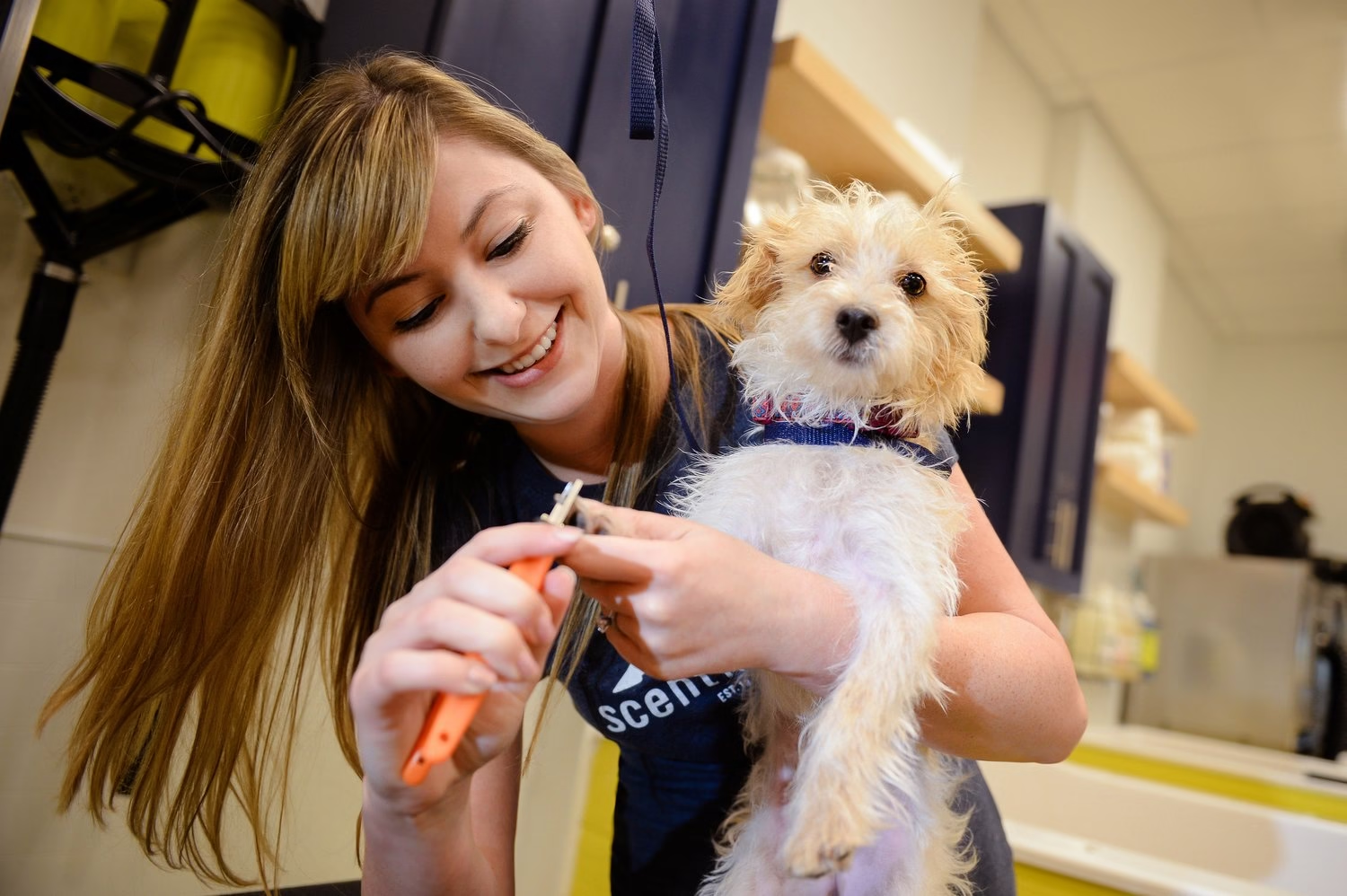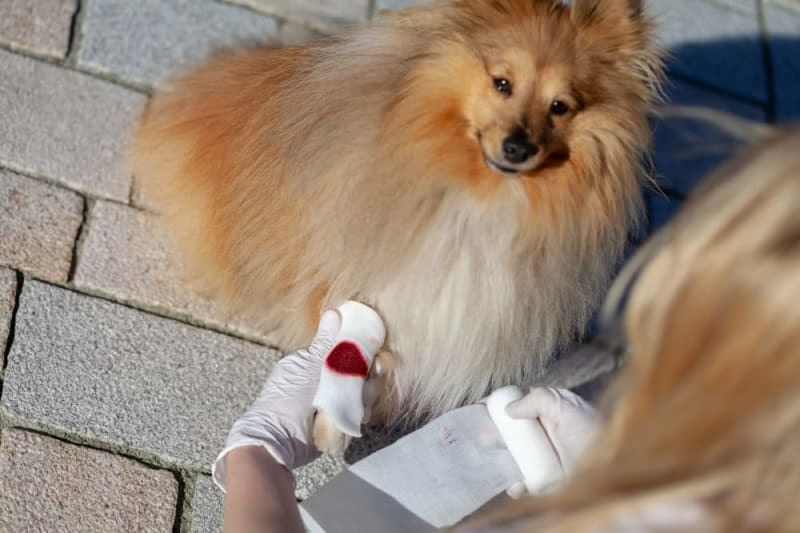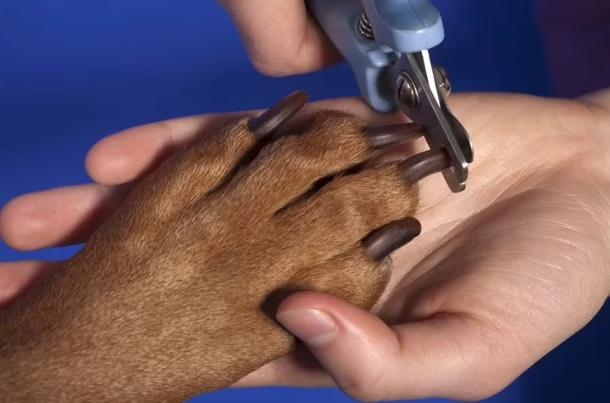Dog Quick Exposed? The Best Treatment to Stop Bleeding
Introduction
When trimming your dog’s nails, accidentally cutting into the quick can be a stressful experience for both you and your pet. The quick is the sensitive part of a dog’s nail that contains nerves and blood vessels, and exposing it can cause noticeable pain and bleeding. While it may seem alarming, this is a fairly common mishap among dog quick exposed owners and can often be treated safely at home with the right approach. Knowing how to react quickly and effectively can help minimize your dog quick exposed discomfort and prevent complications like infection.
Whether the quick is exposed due to over-trimming or an injury, understanding the proper treatment steps is essential. This guide will walk you through everything you need to know—from identifying the issue to applying immediate first aid and when it’s time to call the vet. With the right care, your dog can recover quickly and comfortably.
What Is the Quick in a Dog’s Nail?

The quick is the inner part of a dog’s nail that contains nerves and blood vessels, making it highly sensitive and prone to bleeding when cut or exposed. It supplies nutrients to the nail and is essential for healthy nail growth. In light-colored nails, the quick is often visible as a pink area, but in darker nails, it can be harder to spot. Understanding the location and function of the quick is key to preventing injury during nail trimming or grooming.
Common Causes of Exposed Quick
An exposed quick typically occurs due to accidents during nail trimming, where the nail is cut too short and the quick is nicked. Other causes include trauma from rough play, catching the nail on carpet or furniture, or excessive wear on hard surfaces. dog quick exposed with long or overgrown nails are more susceptible since the quick extends farther down the nail, increasing the risk of exposure during routine care or activity.
Recognizing the Signs of an Exposed Quick
When a dog’s quick is exposed, the most obvious sign is bleeding from the nail. You may also notice your dog quick exposed limping, licking the paw excessively, or pulling away when you try to examine the area. Some dogs may whine or show signs of distress due to the pain. The exposed area might look red, raw, or swollen. Promptly identifying these signs helps ensure quick treatment and reduces the risk of infection or prolonged discomfort for your pet.
Immediate First Aid for a Bleeding Quick

If your dog’s quick is bleeding, act quickly to stop the bleeding and ease your dog’s pain. Gently clean the area with warm water to remove debris. Apply styptic powder or a home alternative like cornstarch or baking soda to the nail and apply gentle pressure. This helps clot the blood and seal the wound. Keep your dog quick exposedcalm and still for several minutes to allow the clot to form and prevent re-injury.
Home Remedies to Help with Healing
After stopping the bleeding, ongoing care is important to promote healing and prevent infection. Clean the area daily with a mild antiseptic or saline solution. Applying a pet-safe antibiotic ointment can help reduce the risk of bacterial infection. You may also gently bandage the paw if your dog quick exposed tolerates it, especially if they’ll be walking on dirty or rough surfaces. Keep your dog’s activity level low to avoid reopening the wound, and monitor the nail for signs of swelling, discharge, or continued pain.
When to Seek Veterinary Care
While many exposed quick injuries can be treated at home, there are times when professional care is necessary. If the bleeding doesn’t stop after several minutes, or if the area becomes swollen, foul-smelling, or shows signs of pus, your dog quick exposed may have an infection that requires veterinary attention. Also, if your dog continues to limp or seems in severe pain, a vet can ensure there’s no deeper injury or damage to the nail bed.
Tips for Preventing Future Quick Injuries
Preventing future injuries starts with regular nail maintenance and proper trimming techniques. Trim your dog’s nails gradually, cutting small amounts at a time to avoid hitting the quick—especially if the nails are dark and the quick isn’t visible. Using sharp, high-quality clippers or a nail grinder can make the process safer and more precise. Regular walks on hard surfaces can also help naturally file nails down. If you’re unsure or uncomfortable trimming your dog’s nails, consider having a groomer or vet do it.
Training Your Dog for Easier Nail Care
Training your dog quick exposed to tolerate or even enjoy nail care can make a big difference in preventing injuries. Start by gently handling your dog’s paws daily and rewarding them with treats and praise. Gradually introduce clippers or grinders without using them at first, letting your dog sniff and inspect the tools. Over time, work up to trimming just one nail per session and build from there. Patience and positive reinforcement are key to making nail care a stress-free part of your routine.
How to Handle a Dog That Resists Nail Trimming

Some dogs strongly resist nail trimming, making the process stressful and risky. If your dog quick exposed pulls away, growls, or hides, it’s important to work on building trust through gradual desensitization. Start by handling your dog’s paws daily without trimming, offering treats and praise for staying calm. Slowly introduce the nail clippers or grinder over several sessions. If your dog remains resistant, consider having a second person help hold and comfort them, or speak with a professional trainer or vet for guidance.
Choosing the Right Tools for Nail Trimming
Using the correct tools can significantly reduce the risk of injuring your dog’s quick. Choose nail clippers that are appropriately sized for your dog’s breed and have a sharp, clean blade. Guillotine-style clippers work well for small to medium dogs, while scissor-style clippers are better for larger breeds. Nail grinders are another excellent option, allowing for gradual trimming and a smoother finish. Always keep styptic powder or a clotting agent nearby in case of accidental bleeding during the process.
Dealing with Re-Bleeding or Setbacks
Sometimes, even with careful treatment, the nail may start bleeding again if your dog quick exposed bumps or licks it. If re-bleeding occurs, remain calm and reapply styptic powder or a similar clotting agent while applying gentle pressure. Keep your dog still for several minutes to allow the clot to form again. Avoid letting your dog walk on rough surfaces or lick the area until it’s fully healed. Persistent bleeding or repeated setbacks may require a vet’s attention to ensure proper recovery.
When Nail Injuries Affect Your Dog’s Behavior
A painful nail injury can cause temporary changes in your dog’s behavior, such as limping, avoiding activity, or acting withdrawn. Some dogs may also develop anxiety around paw handling or nail trimming after a negative experience. Be patient and gentle during recovery, and work on rebuilding positive associations with paw contact using treats and praise. If behavioral changes continue or worsen, consult with your vet or a professional dog trainer to address any lingering pain or fear.
Signs of Infection to Watch For
After an exposed quick injury, it’s essential to monitor the nail for any signs of infection. Look out for swelling, increased redness, discharge (especially pus), or a foul smell coming from the injury site. If your dog quick exposed seems more sensitive to touch, has a fever, or is excessively licking the area, these may be signs that the injury has become infected. If any of these symptoms appear, it’s important to seek veterinary care to prevent the infection from spreading and causing further complications.
The Role of Diet in Healing Nail Injuries
A balanced diet plays a significant role in your dog’s ability to heal. Protein, vitamins, and minerals are essential for tissue repair and immune system function. Foods rich in omega-3 fatty acids, such as fish or certain supplements, can also promote healthy skin and nail growth. Ensuring your dog quick exposed has a nutritious diet during the recovery period will help support the healing of the injured nail and improve overall health, making it easier for your dog to recover quickly and comfortably.
How Long Does It Take for a Dog’s Quick to Heal?
The healing time for an exposed quick varies depending on the severity of the injury, your dog’s overall health, and how well the wound is cared for. Generally, a minor injury can heal in 7 to 10 days, while more severe injuries might take a few weeks. During the healing process, it’s important to keep the nail clean and monitor for signs of infection. As the quick heals, your dog quick exposed may resume normal activities, but it’s important to avoid excessive movement that could cause the wound to reopen.
Conclusion
Injuring a dog’s quick during nail trimming can be a frightening experience, but with prompt and proper care, it’s usually manageable. By recognizing the signs of an exposed quick and following the correct first aid procedures, you can minimize pain and speed up the healing process. Preventing future injuries through proper nail care techniques and regular grooming is key to keeping your dog quick exposed comfortable and safe. Remember, if you’re ever uncertain or face complications, don’t hesitate to seek professional help from a veterinarian or groomer.
You Can Also Read: Can a Dog Flea Live in Your Hair?
FAQS
How to heal dogs exposed quickly?
Your veterinarian may apply antibiotic ointment or powder to the exposed nail bed and bandage the foot to prevent contamination and to minimize further bleeding. An oral or injectable antibiotic may be advised as well. Since the nail bed or quick is attached to bone, prevention of infection is crucial.
Is it bad for a dog to lick exposed quickly?
The quick is full of nerve endings and blood vessels, so it’ll be sensitive and vulnerable to bleeding if it gets traumatized again. It’s best to put an e-collar on him so that he can’t lick it, as that’ll be the quickest way it’ll get infected. Keep him out of muddy or wet areas so it’ll stay clean and dry. No baths.
What to do if dogs quick bleeds?
Apply styptic powder
Cup your hand and pour some styptic powder or cornstarch with baking soda into your palm. Gently dip the dog’s bleeding nail into the powder, repeating if the bleeding doesn’t come to an immediate stop. Don’t wipe away the blood before dipping because it will aid coagulation.
Can I give my dog paracetamol?
No dog should be given paracetamol without being prescribed it by a vet. But if your dog does accidentally ingest paracetamol, the effects can vary depending on the size of the dog. For instance, a dog that weighs 20kg would only suffer toxic effects after eating seven 500mg tablets.
What is the best home remedy for a dog open wound?
You can first clean the wound with water to clear away most dirt and debris. After you’ve washed out the wound with water, use wound spray and wound wipes to finish cleaning the wound. Use styptic powder to help stop bleeding from minor cuts or torn nails. Apply a small amount of wound ointment to the area.
